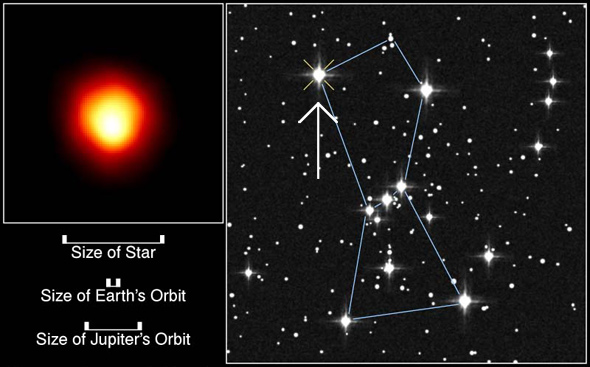Star: Betelgeuse
Chemical makeup: carbon, nitrogen, oxygen
Location in space: Right ascension- 5 hr 55 min 10.3 sec
Declination- +7 degrees 24' 25.4"
427 light years from Sun
Spectrum analysis of most abundant chemical (carbon):
Chemical makeup: carbon, nitrogen, oxygen
Location in space: Right ascension- 5 hr 55 min 10.3 sec
Declination- +7 degrees 24' 25.4"
427 light years from Sun
Spectrum analysis of most abundant chemical (carbon):
Stellar classification: M2Ib red supergiant


http://www.slate.com/blogs/bad_astronomy/2014/09/08/betelgeuse_astronomers_give_it_100_000_years_before_it_explodes.html
Sources:
100,000 Stars. (n.d.). Retrieved September 26, 2015, from http://stars.chromeexperiments.com/
Internet STELLAR DATABASE. (n.d.). Retrieved September 27, 2015, from http://www.stellar-database.com/
100,000 Stars. (n.d.). Retrieved September 26, 2015, from http://stars.chromeexperiments.com/
Internet STELLAR DATABASE. (n.d.). Retrieved September 27, 2015, from http://www.stellar-database.com/
Betelgeuse. (n.d.). Retrieved September 27, 2015, from https://en.wikipedia.org/wiki/Betelgeuse#cite_note-SIMBAD-3
No comments:
Post a Comment